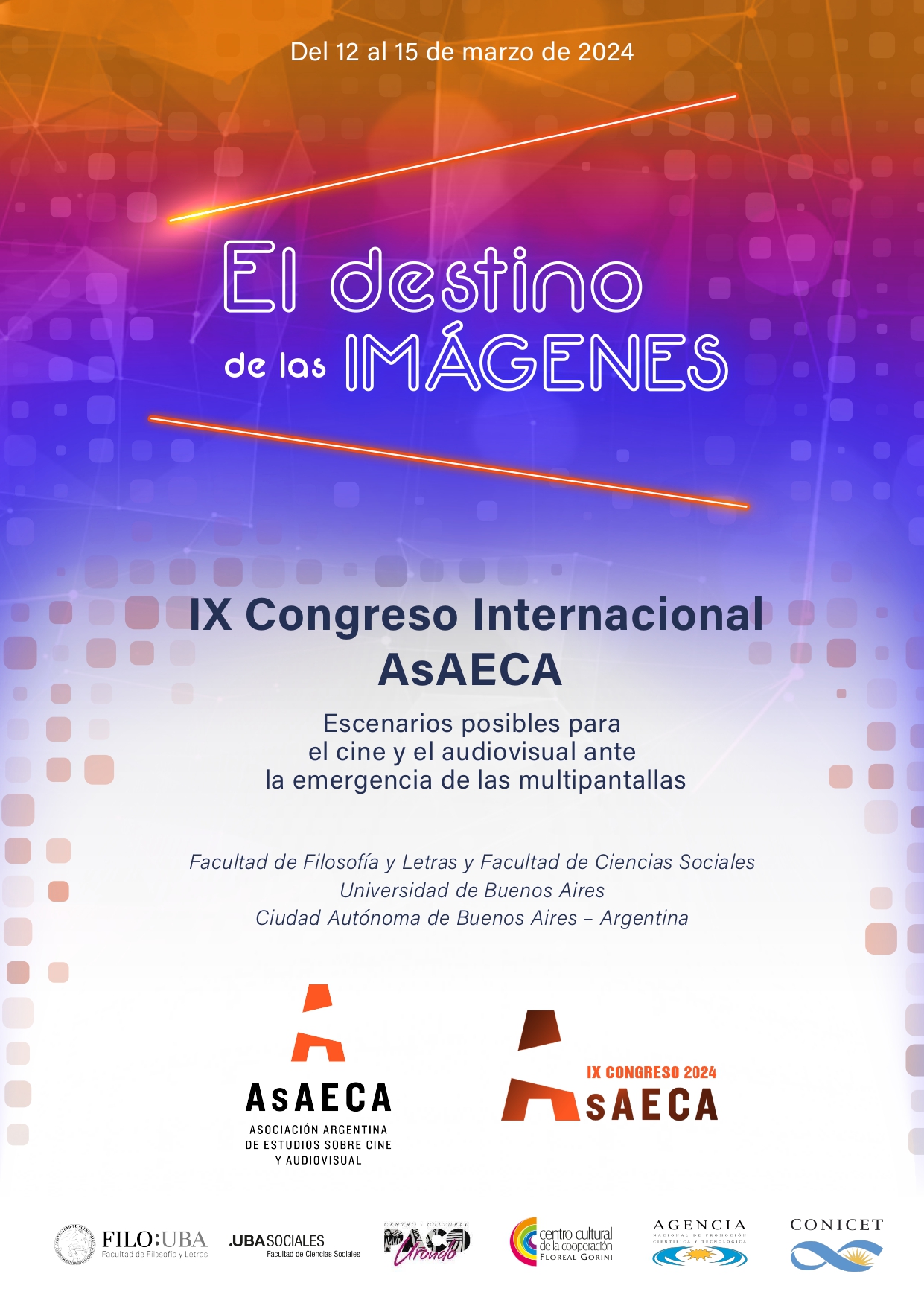The Fate of Images

IX International Congress As AECA 2024
Possible scenarios for cinema and audiovisuals in the face of the emergence of multiscreens
An increasingly dynamic and uncertain scenario is being configured at the same time from the decisive digital convergence that is experienced on different screens and devices, in which cinematographic productions and audiovisual media are integrated with the developments associated with computing, the industry of the video game and the universe of social networks.
This panorama forces us to continually review the theoretical and methodological devices used to reflect on cinematographic and audiovisual productions, as well as to design public intervention strategies linked to research, teaching and management. Faced with a boiling audiovisual space, whose very terminology no longer adjusts to the majority of existing practices and consumption (much of our slang belongs to the semantic field of the analogue: films, filming, tapes, film), it is worth asking to what extent this insistent irruption of the novelty truly moves the epistemic and heuristic bases of thinking about the images and sounds of the 20th century.
It should be emphasized that these phenomena do not develop synchronously and in unison in Europe, the United States and Latin America. Along with the explosion of multiscreens, there is an increasing concentration of productive sectors and exhibition venues in all their forms. This is why it is also necessary to debate public policies aimed at the audiovisual sector, focusing on the different sections of the industrialization chain that, especially in South America, require more inventive and effective protection.
On the other hand, we consider that the fascination with the novel veins that are drawn on the unstable terrain of the current audiovisual ecosystem should not cloud the gaze on certain issues that, far from being settled, emerge incessantly in the studies of researchers from various backgrounds. latitudes: the immense areas of vacancy that still exist in the histories of Latin American cinemas, the increasingly rigorous practices of interdisciplinary and transdisciplinary methods in order to reflect on historically situated phenomena, the communicating vessels between the serial formats of yesterday and today , the persistent light provided by certain theoretical perspectives on film analysis (gender, decolonial, intersectional, affects and emotions, etc.), the constant danger of extinction of audiovisual heritage, both in regard to film material , as well as the fragility and outdated nature of digital formats.
The IX Congress of AsAECA seeks to become a space in which to explore and debate these problems, with the aim of promoting discussions and raising questions in the community of people whose professional, student, intellectual and emotional tasks are crossed by cinema and audiovisuals. .
See program:






